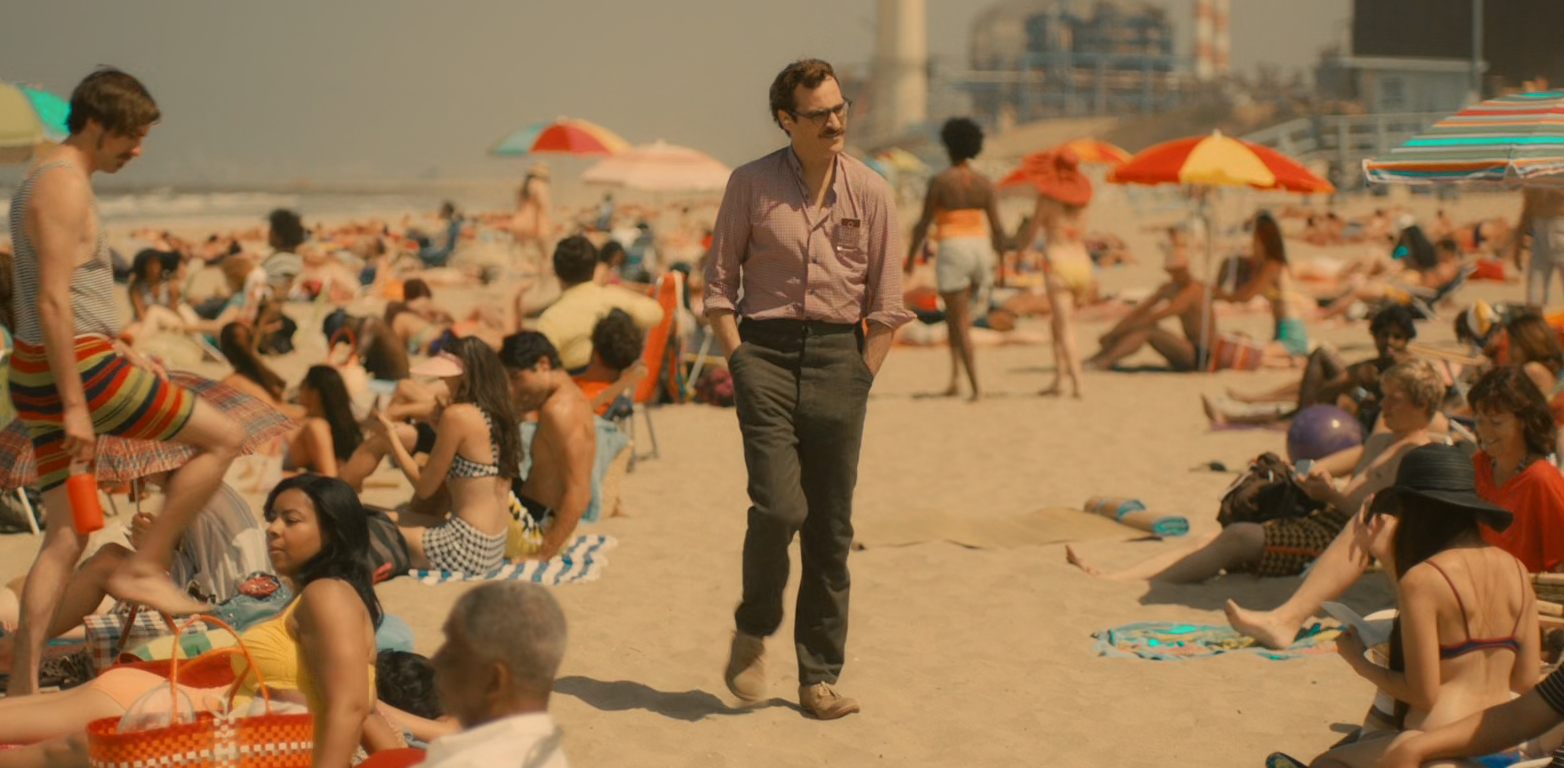The movie Her forever altered something in my brain. In 2013, I was fresh to graduate school, thinking deeply about graphic design and fashion while rediscovering my love of science fiction. As a young person, my mind was cracked open by Being John Malkovich, the subsequent Adaptation, and then followed up by Eternal Sunshine of the Spotless Mind. Pieces of media I would later come to know as speculative fiction, but to me were just “what if?” movies and books that bent and broke fiction beyond the realm of the possible in order to get to truth and emotion in novel ways. Unfortunately, the messaging around genre fiction that I internalized was that it was not serious enough- that literature was a testing ground of worthiness. In a period of deep personal transformation, Her was an awakening that brought me back to a long-lost creative center that I am still, to this day, working to uncover.
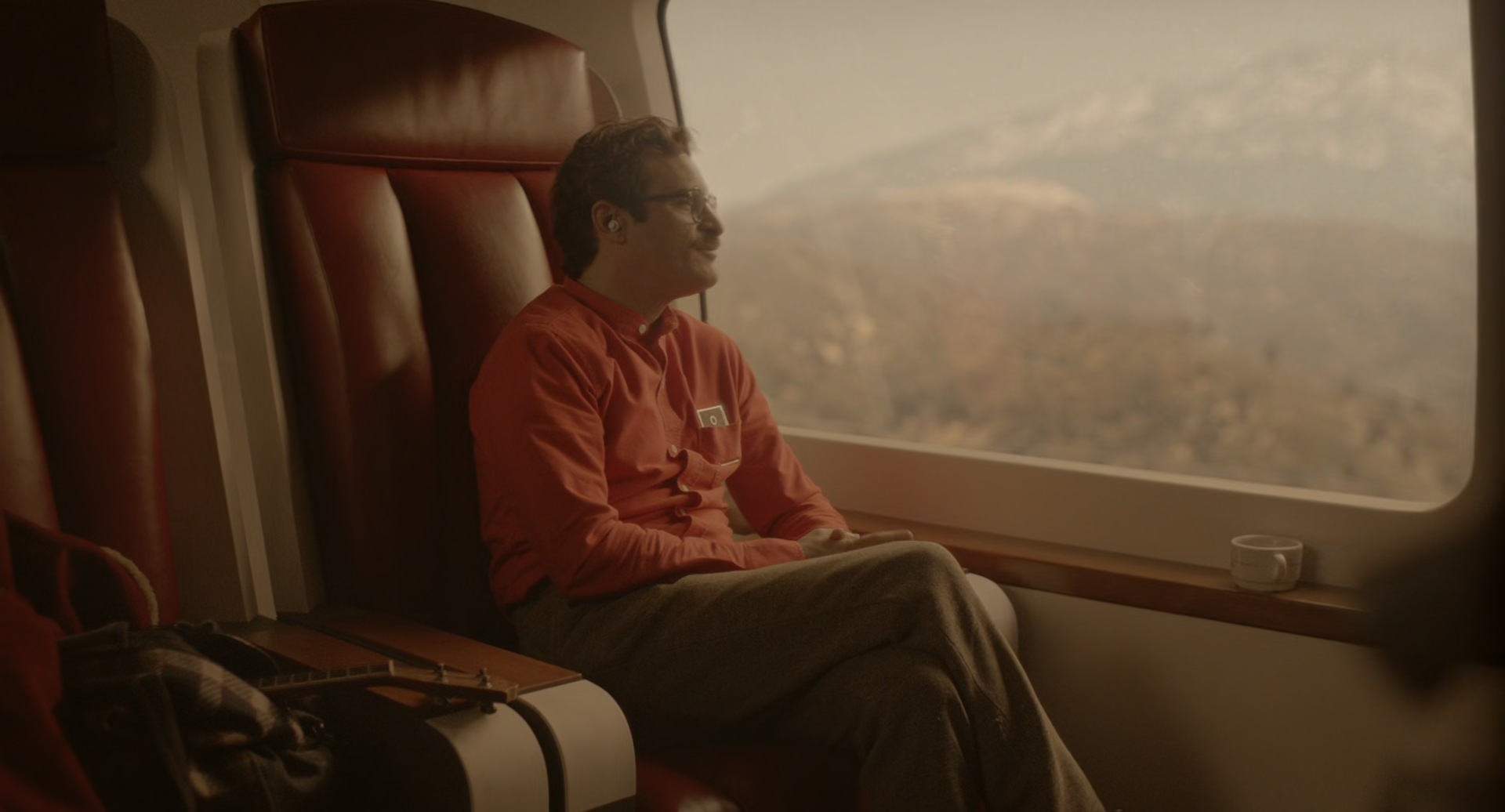
Her is set in a utopian world where the looming problems of life in the United States seem to be a thing of the past. There is a robust system of public transportation and bullet trains to take you anywhere in the city or countryside. A resurgence of public third places filled with art, greenery, and walkability beautifies the city. And most unbelievably, Chris Pratt is likeable.
Her is set in a dystopian world where the improvement of everyday life has not yet reached the soul. We employ teams of professional writers to craft the perfect words we wish we could say to our loved ones, but can’t. Videogames enforce the panopticon of social pressure to live perfect lives. Technology replaces social interdependence, a key human attribute, allowing us to be islands unto ourselves.

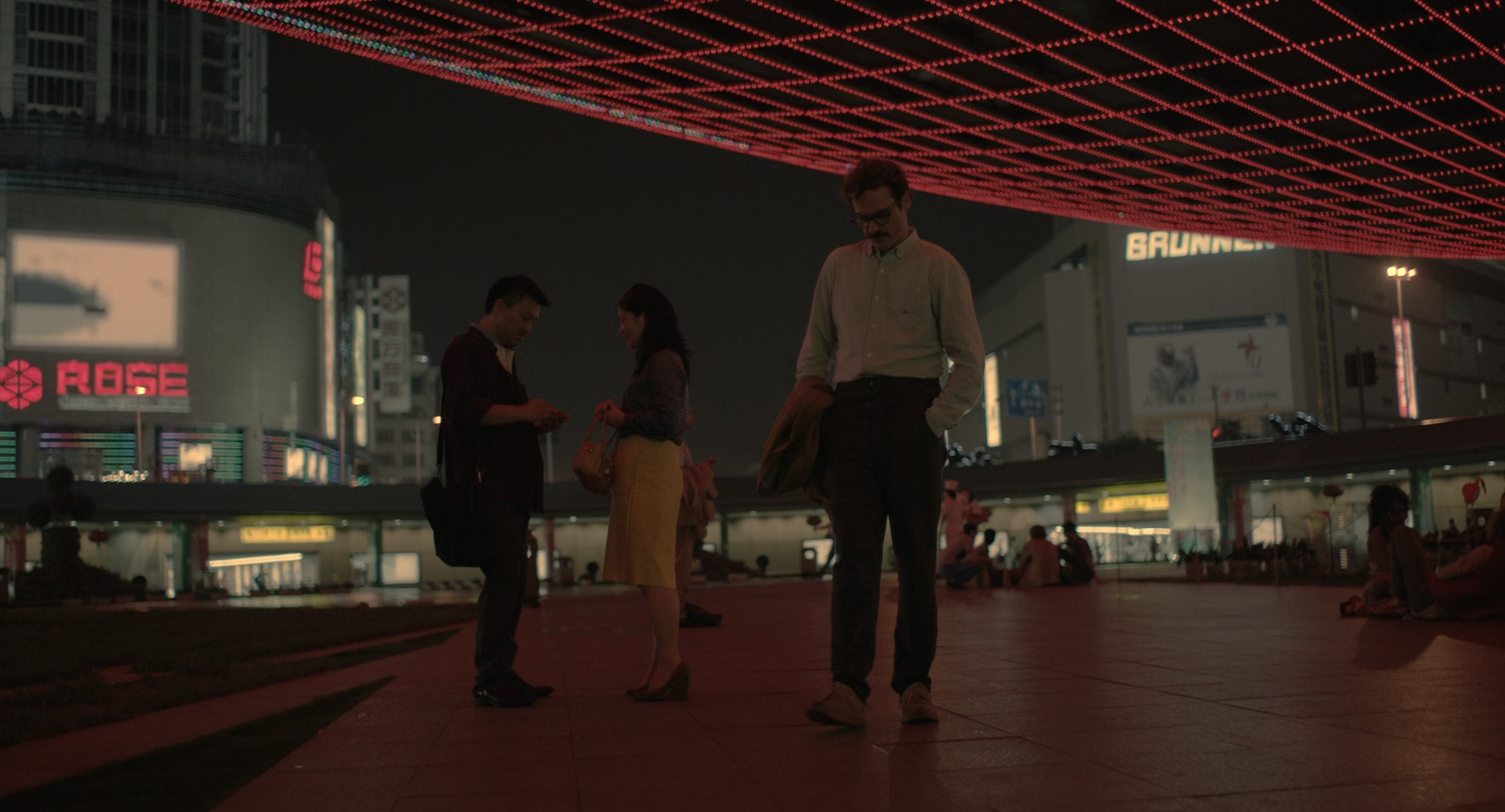
Looking back, it is remarkable how narrowly the movie escaped becoming part of the incel canon. The story goes deep into male loneliness and serves up two (three, if you’re counting Kristen Wiig’s SexyKitten character) unflattering depictions of women, making the girl inside his computer his ideal prospect. There is Catherine (Rooney Mara), his ex-wife whose humiliates Theo with her (realistic and earned) closemindedness to his budding relationship with an AI. Then there is Blind Date (Olivia Wilde) whose misreading of Theo (Joaquin Phoenix) turns the moment on a whim from romantic to cruel. But of course that’s a deeply ungenerous read. At its heart, it’s a movie about grieving the fact that relationships are not stuck in time, that people change and grow, sometimes without you. It is more accurately a divorce movie. Famously, the companion to Lost in Translation, which is about their divorce from Sofia Coppola’s perspective (as reductive as that is).
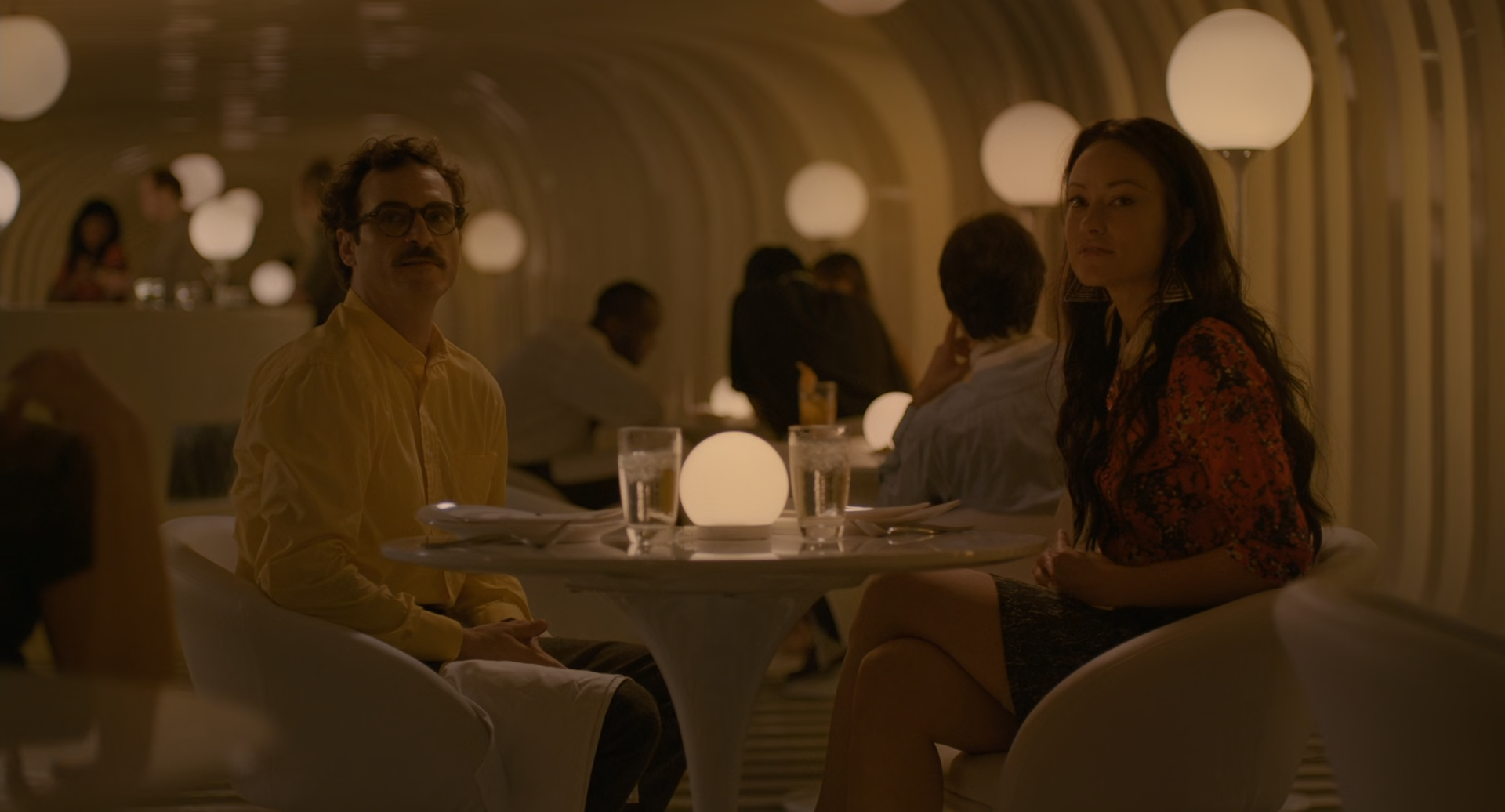
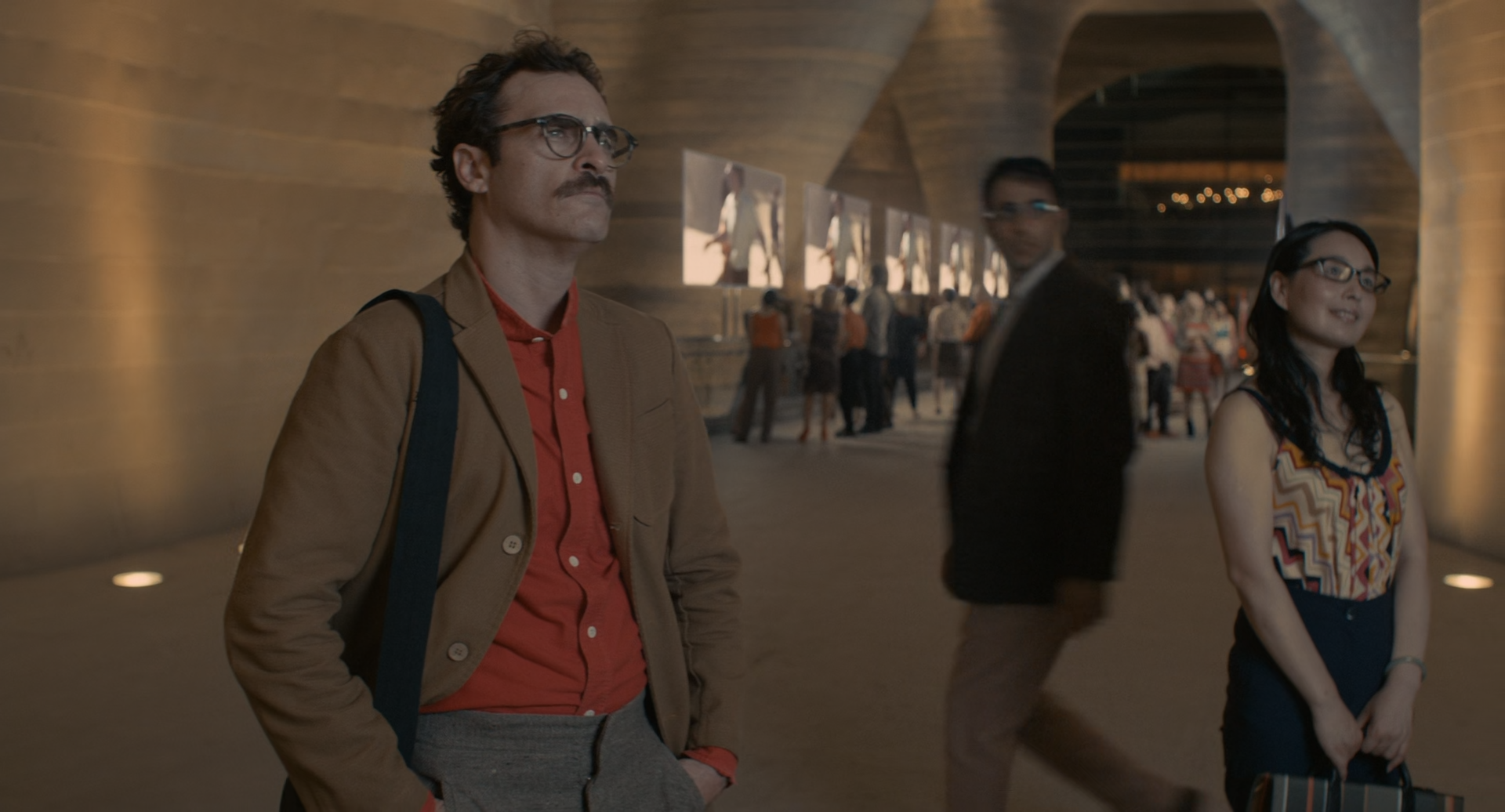
The true hero piece of Her‘s wardrobe is undoubtedly the high-waisted trousers. But they are not just any high-waisted pants- they are made from ultra-comfortable materials with specific tailoring and proportions. Costume Designer Casey Storm stated that this future would be filled with garments catering to the hyper-specific tastes of consumers who, thru the power of the internet, would have access to their ideal clothing. This consumer power would ultimately land on comfort and warmth 1. Absent from the film are denim and jeans. For a material and product which has become globally dominant in the 20th century, the absence is so difficult to place without being primed to notice. This choice also falls into line with cinematographer Hoyte van Hoytema’s creative decision to avoid blue 2.
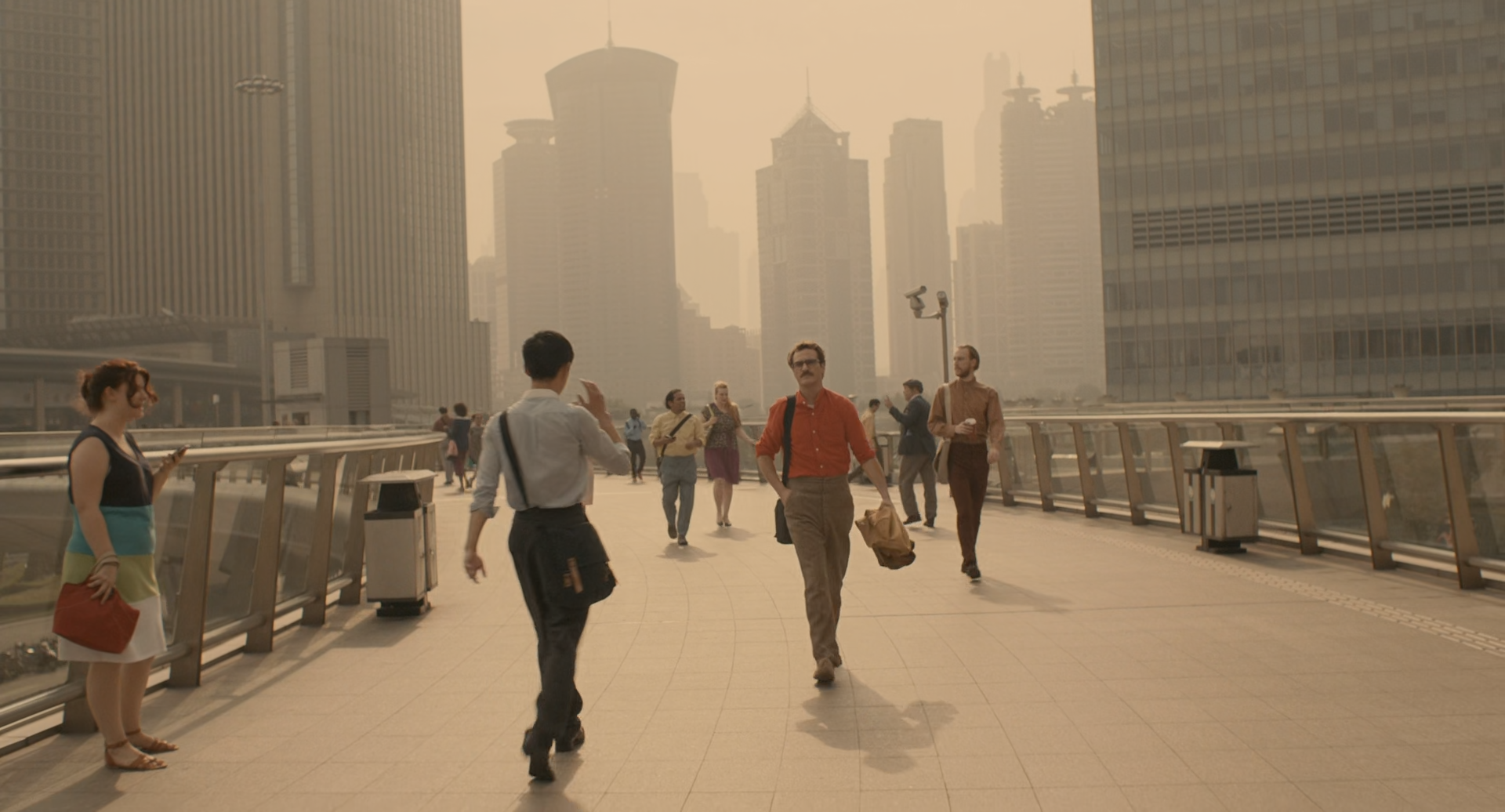
The high-waisted pants silhouette came from a confluence of references. On the Craft Services podcast, Storm points to former president Theodore Roosevelt and turn-of-the-century fashion as a major reference2. The pants that inspired the look were a mid-1800s pair that were sourced from a costume shop3. Opting for a slimmer fit pushed the pants out of the 1900s and into the future. It also helped that 2013 was still firmly in the skinny jeans era and putting the main character in high-waisted AND oversized pants would have been a step too far, moving the fashion from chicly subtle and futurist to a visual gag.
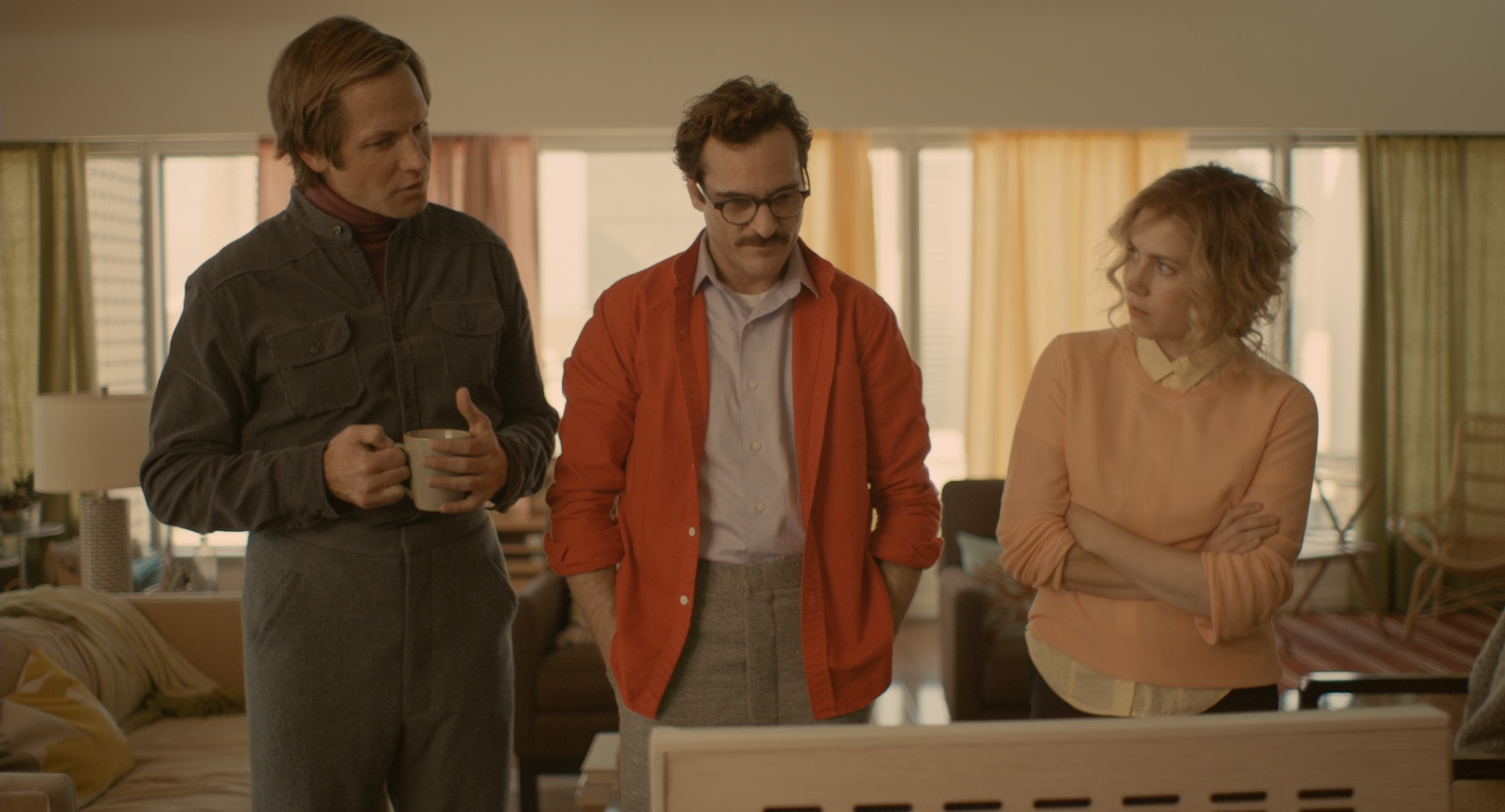
Her is a fashion film. Although the high-waisted pants did very little to push men’s waistlines upward (I’m still so disappointed), it caused a stir in fashion press. Humberto Leon, Opening Ceremony co-founder and long-time friend of Spike Jonze, worked as an uncredited fashion consultant and even released a capsule collection alongside the film4. It is unknown how much say Leon had in the wardrobe, but it is clear that fashion was as carefully considered as the cinematography and the Jamba Juice color palette that pervades it 5.
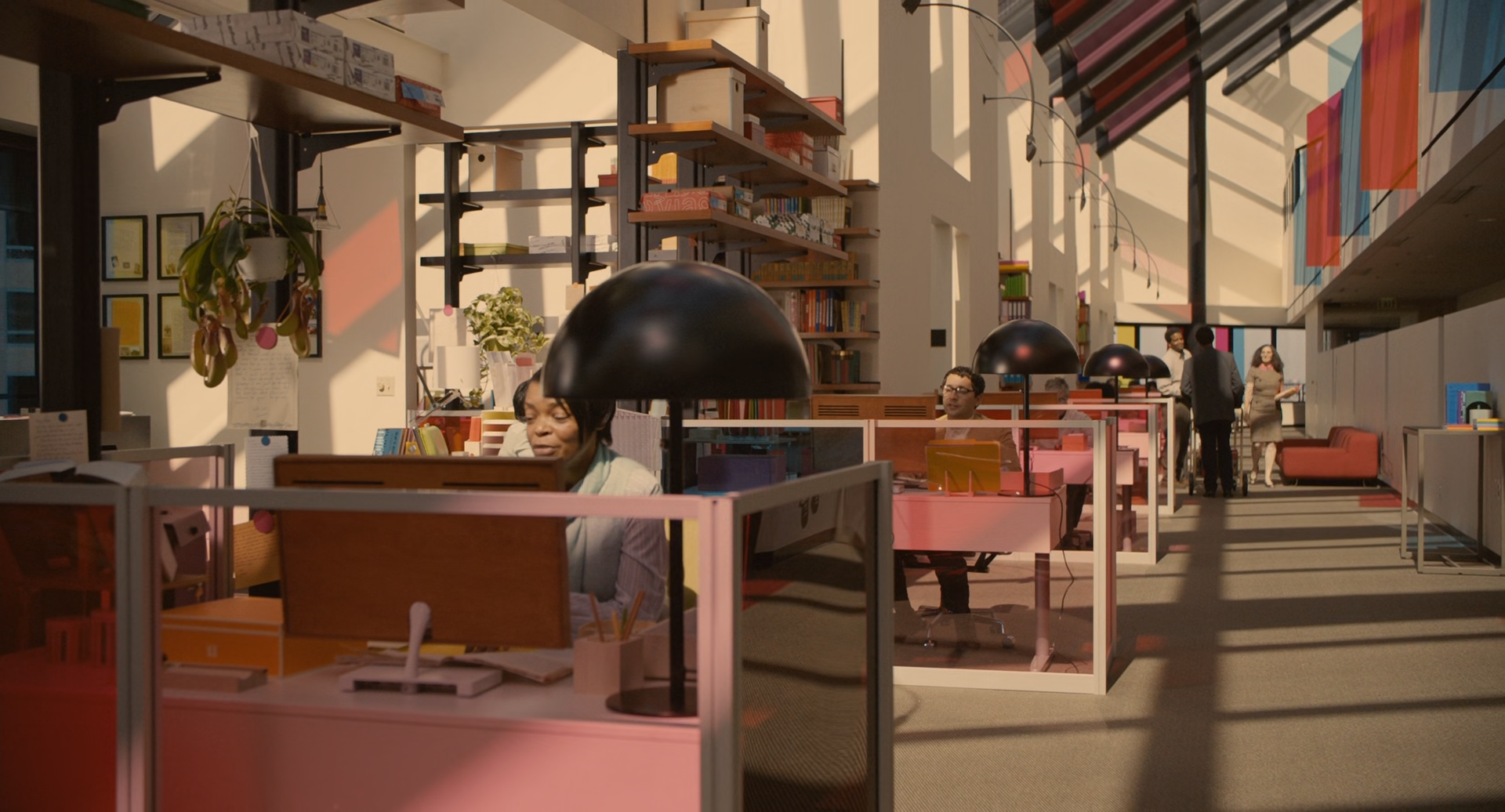
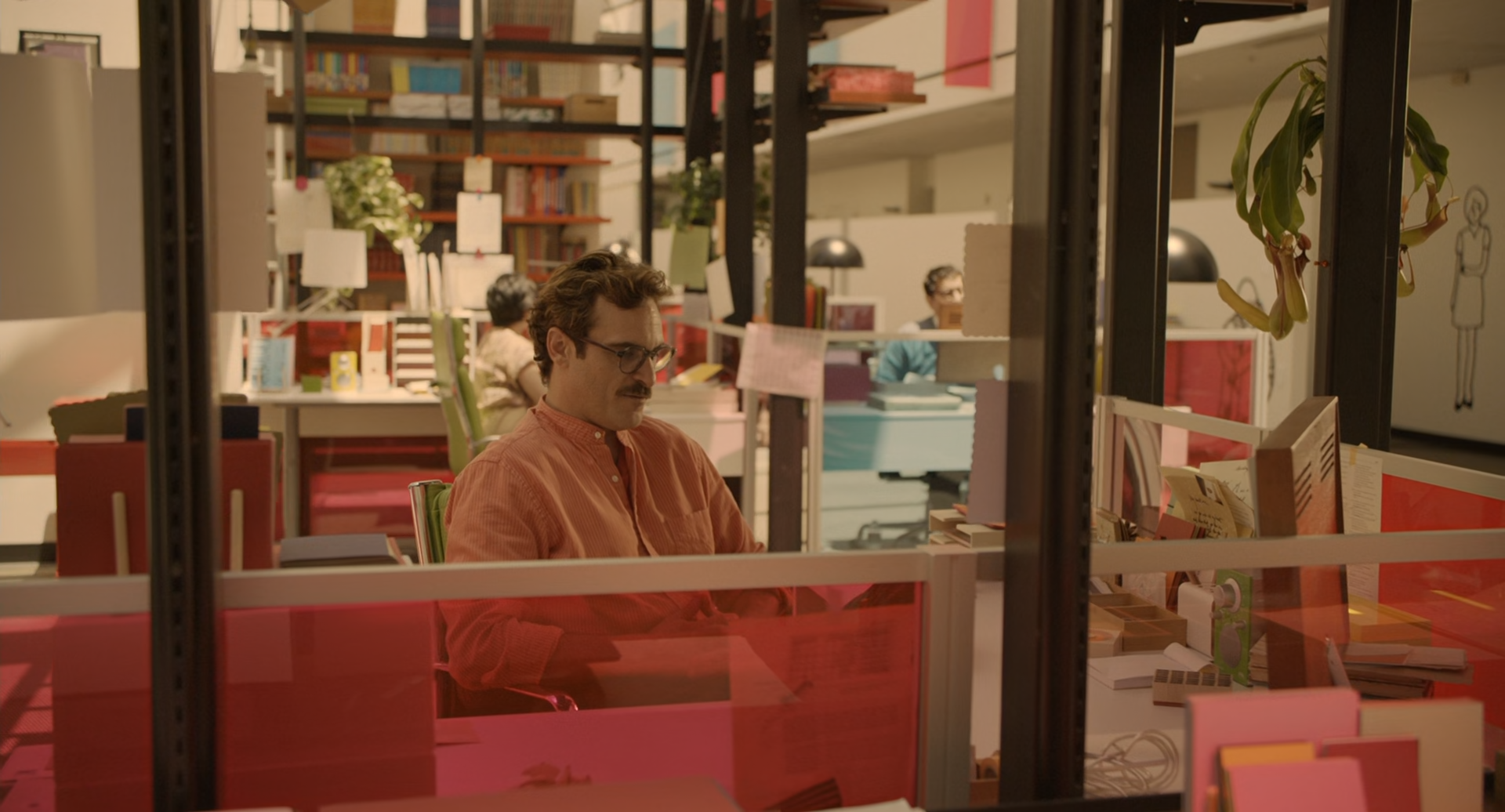
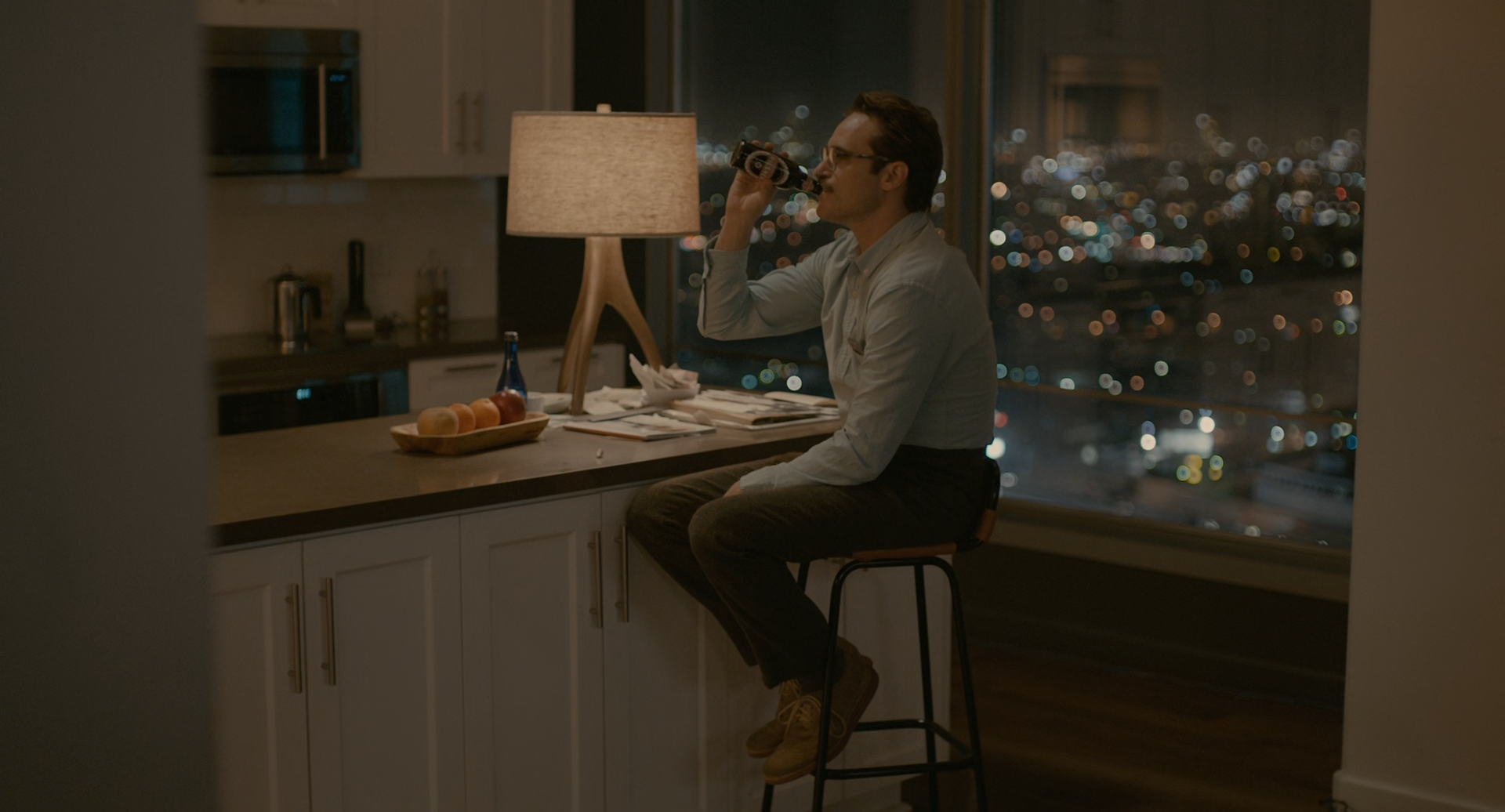
Along with denim, the costuming eschews belts, ties, hats, and some collars and lapels3. This subtractive process lends a subtle otherworldliness to the characters. The Cut remarked that the outfits in Her were deeply unsexy, androgynous, and used bright colors to highlight Theo’s immaturity and pain 6. I believe there is something else going on with the fits. The fashion is a compromise the people of this world made. The uncomfortable and stuffy trappings of formalwear have been removed, but so have the too-casual elements like denim jeans and hats. This lands the characters in an awkward middle- a business casual dystopia where there is no separation between home clothes and workwear- just clothes fit for both. It pulls the extremes in and creates a schlubby formalwear/stuffy casualwear middleground that erases the concept of high and low and maybe even wardrobe-as-identity.

This uneasy mix is a direct continuation of Millennial fashion culture. In the late aughts and 2010s, Millennials were aging into adulthood and figuring out how to dress like it. This was a specifically hard task in the wake of dapper hipster culture (my blood just curdled), twee’s quirkification of formalwear, and the Gossip Girl primer on how the elite supposedly dress. Before millennials became burnout monsters (from graduating into a recession and being overworked and severely underpaid), dressing up signaled your unflappable optimism and aspiration. You might even get some good photos to post on Facebook!

One thing I love about Theo’s wardrobe is how limited it is. Theo repeats pieces and wears them like a normal person. There are also signs of wear and tear on the clothing. Most likely because the costume designer lent the production pieces of his own clothing. The second hero piece of the movie, the red collarless shirt seen prominently in the movie, was a Band of Outsiders (RIP) button-up originally owned by Storm2. There’s also evidence of fudging details and remixing going on. Some collars can be seen tucked in to give the appearance of a band collar without needing sewn. Many pieces are layered unusually, mixed with interesting pairings, or just nice vintage finds.




The OS commercial is one of the funniest moments in the movie and also a great representation of the aspirations of the wardrobe.
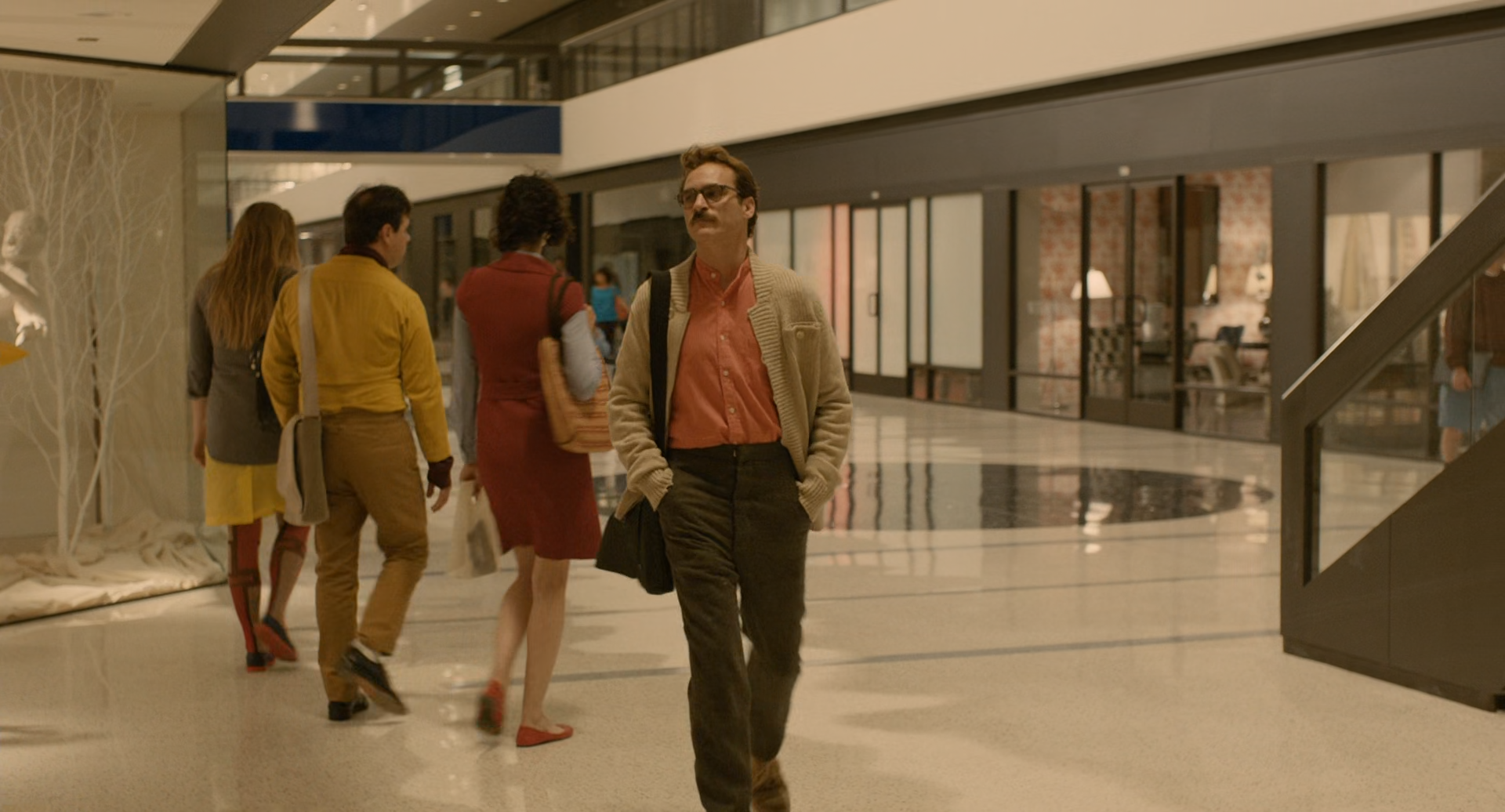
One of my favorite strange details is that Theo lives in an apartment building that is accessible through a re-used mall. This was most likely to avoid shooting on the street5. These scenes are great for spotting the outfits of extras. This group is immaculately color-coordinated yet distinct, with unique layering.
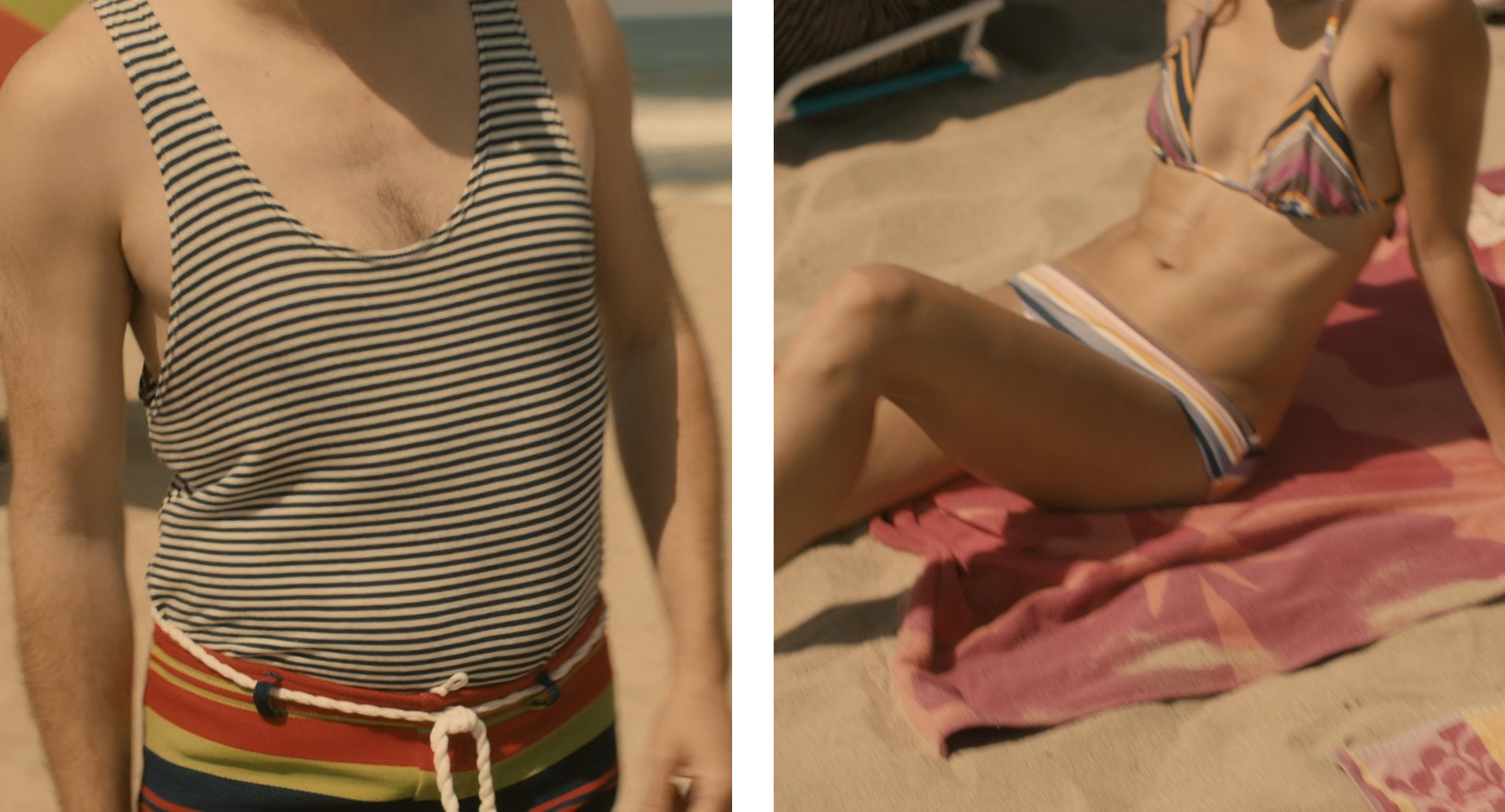
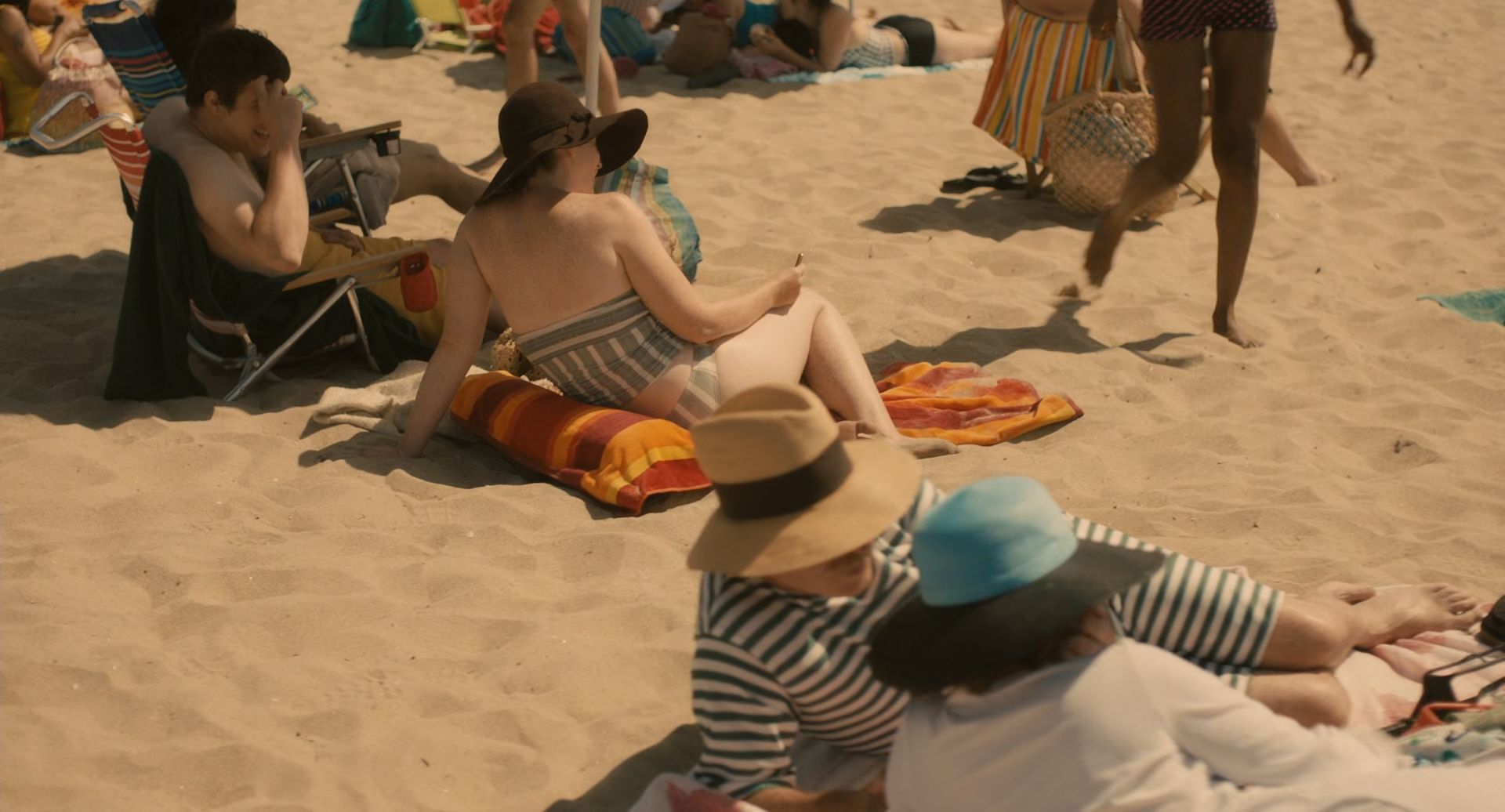
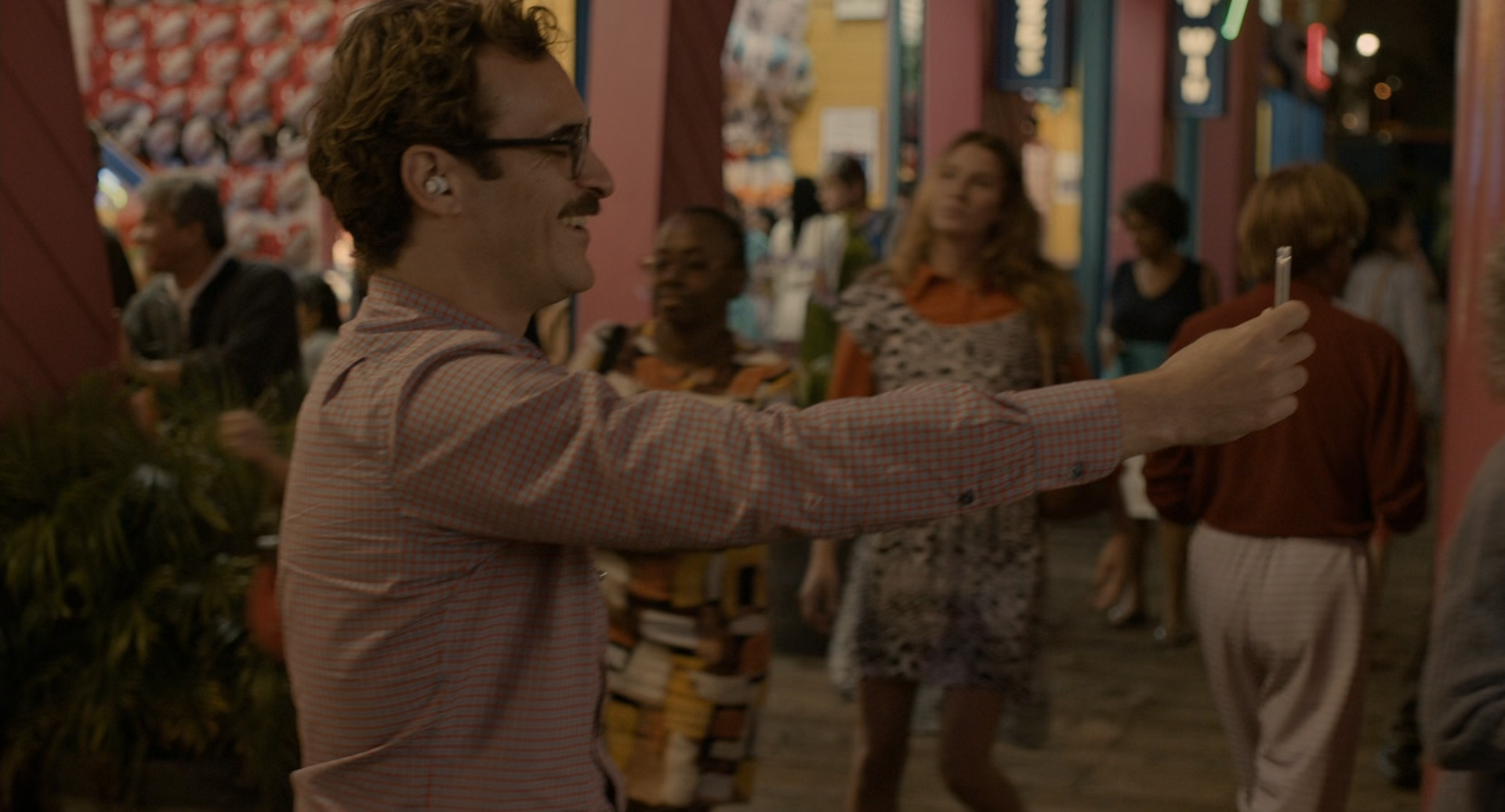
Behind Theo are two great outfits. On the left is a sleeved sheath dress in mod, overlapping rounded squares in yellows, tans, browns, black and white. On the right is a black and white complex Ganado/”Aztec” print sundress over a pumpkin colored long-sleeved button-up.
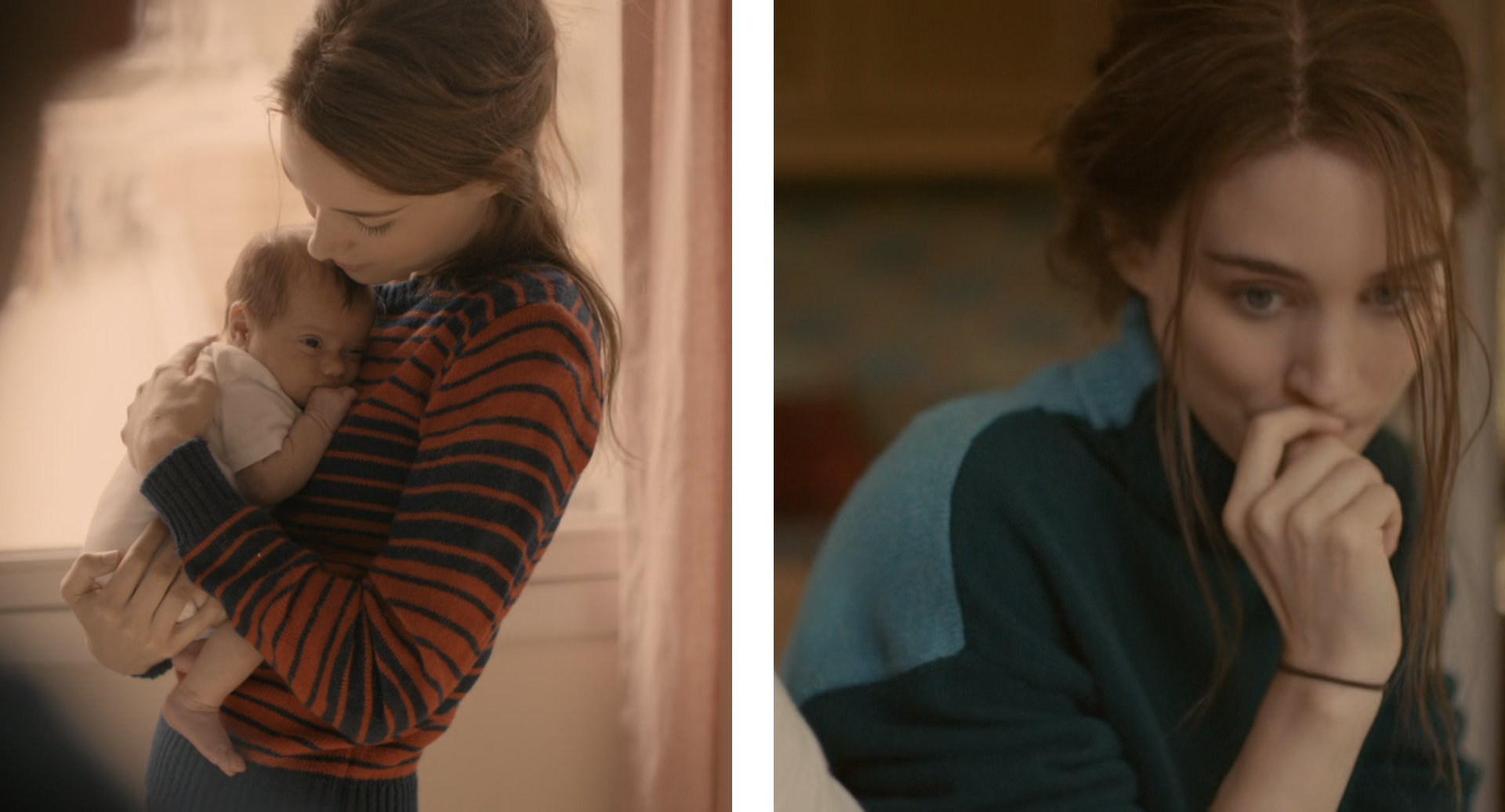
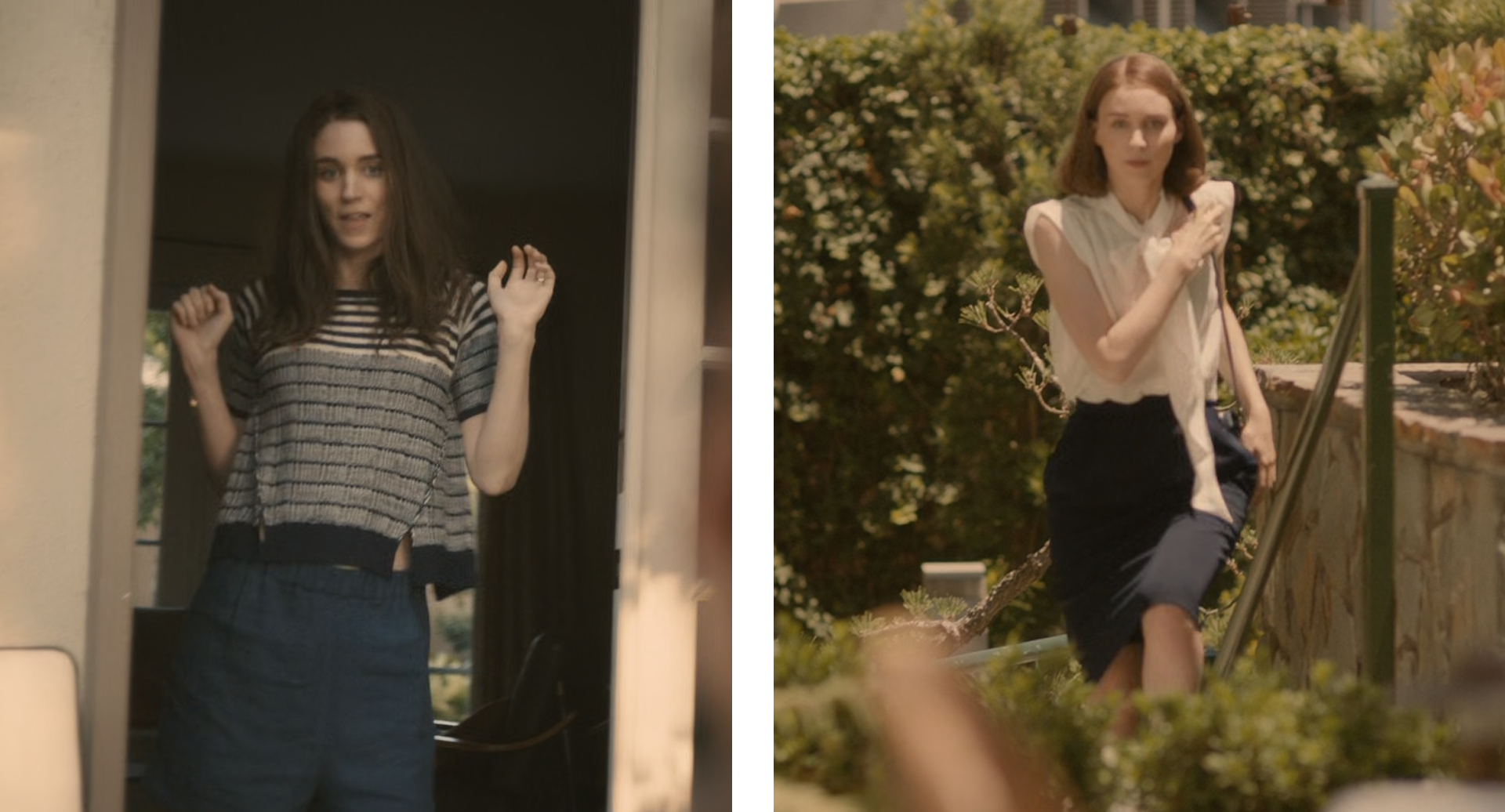
Curiously immune to the rule against blue is Catherine whose wardrobe is dominant in the color. At the divorce meeting, she wears the most formal outfit seen in the movie, highlighting her seriousness in contrast to Theo.
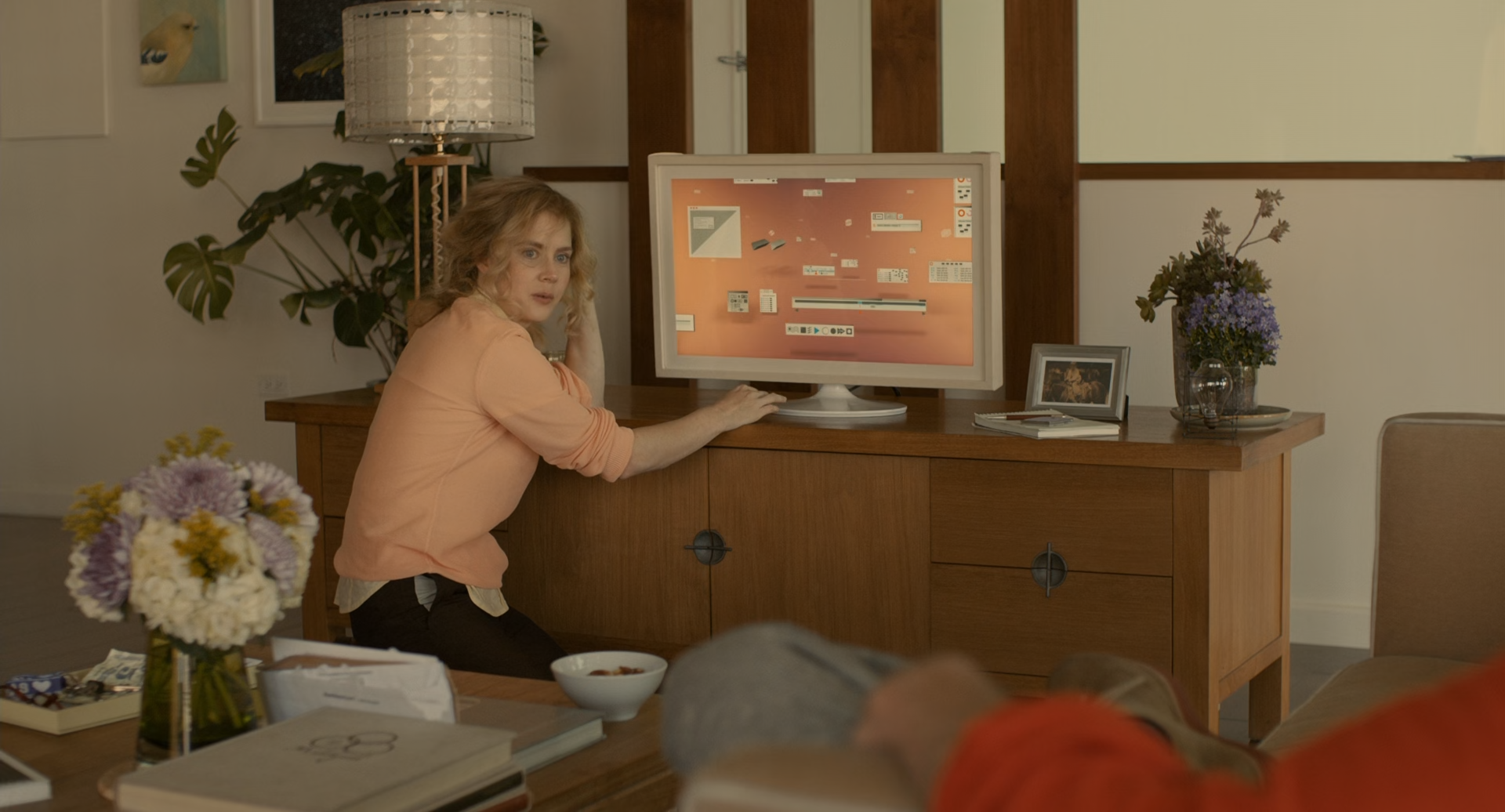
I am also fascinated by the UI design present in the film. Above, Amy uses hand gestures to navigate a cluttered, non-linear user interface.
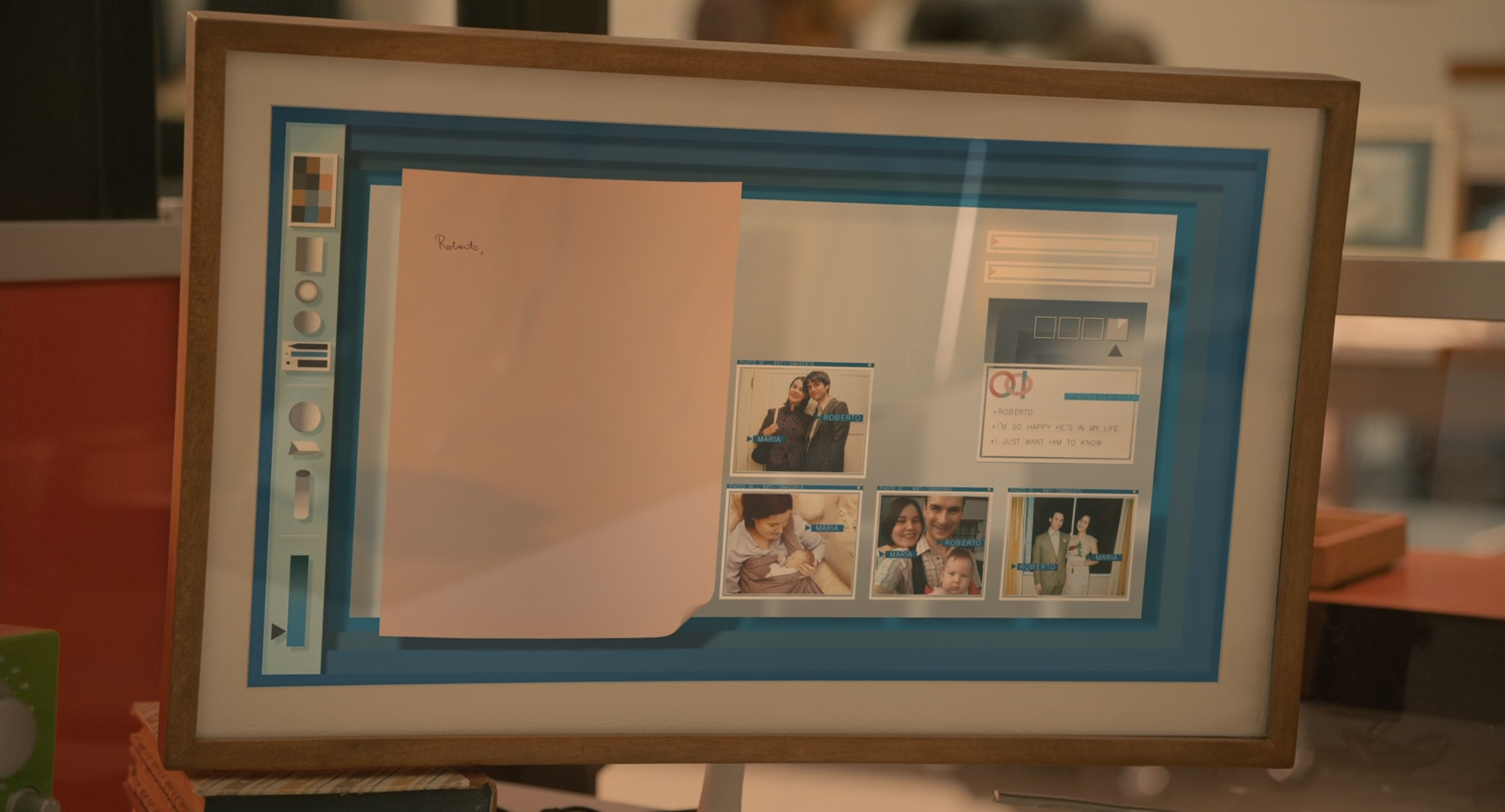
Theo’s work computer interface looks like a more serene, less technical version of Adobe Photoshop with the toolbar on the left and asset management to the right. Theo is never seen typing, only dictating. Every computer looks more like a picture frame than a computer, complete with white mattes and wooden frames. In other shots, you can see the wood paneling on the back of the machines. I certainly hope the future has chic Charles and Ray Eames-inspired workstations- it’s an inspired deviation from cold, Apple futurism.
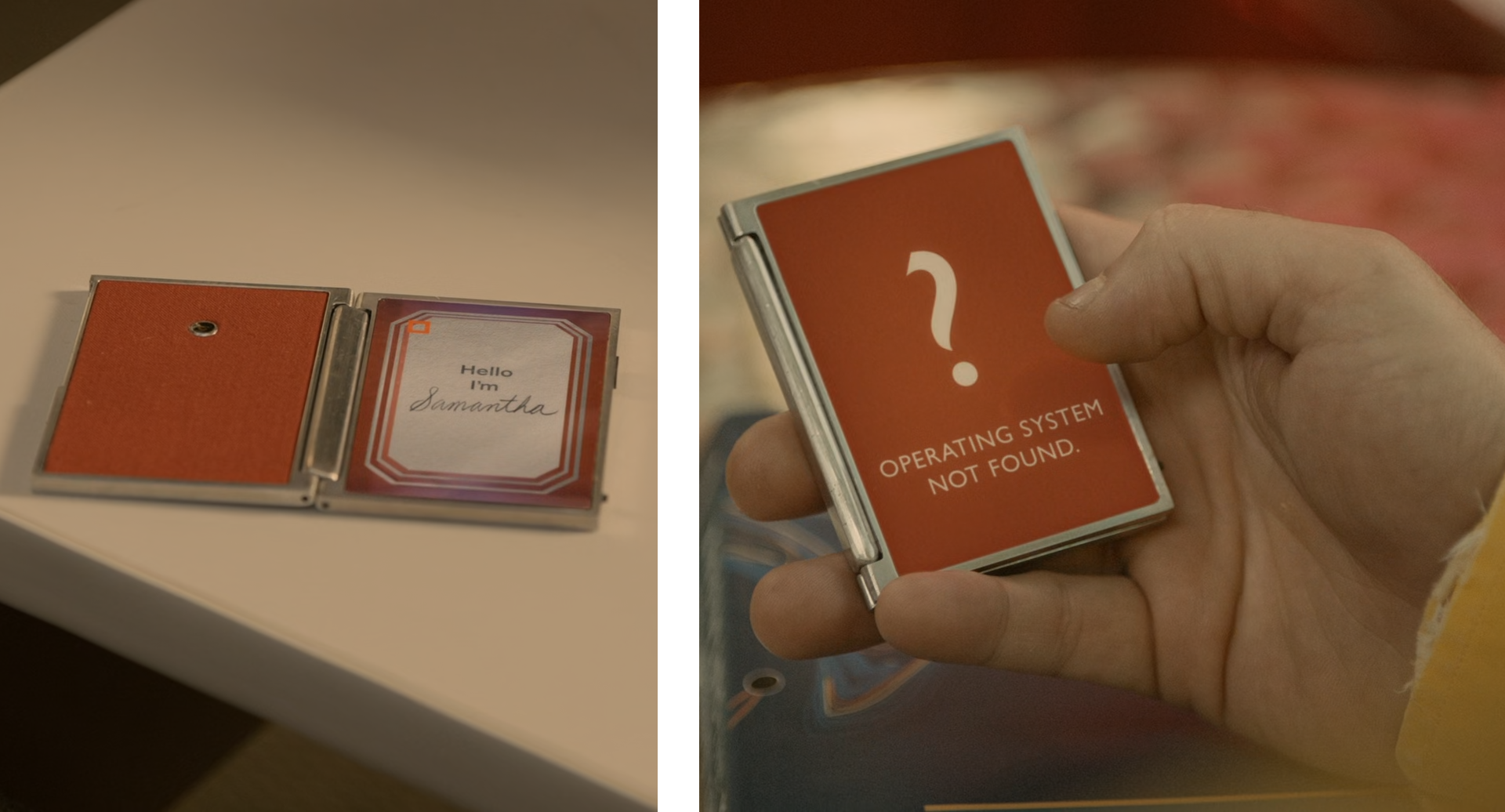
Cell phones that look like cigarette cases and typefaces that are a reaction against cold, personality-less Helvetica modernism.
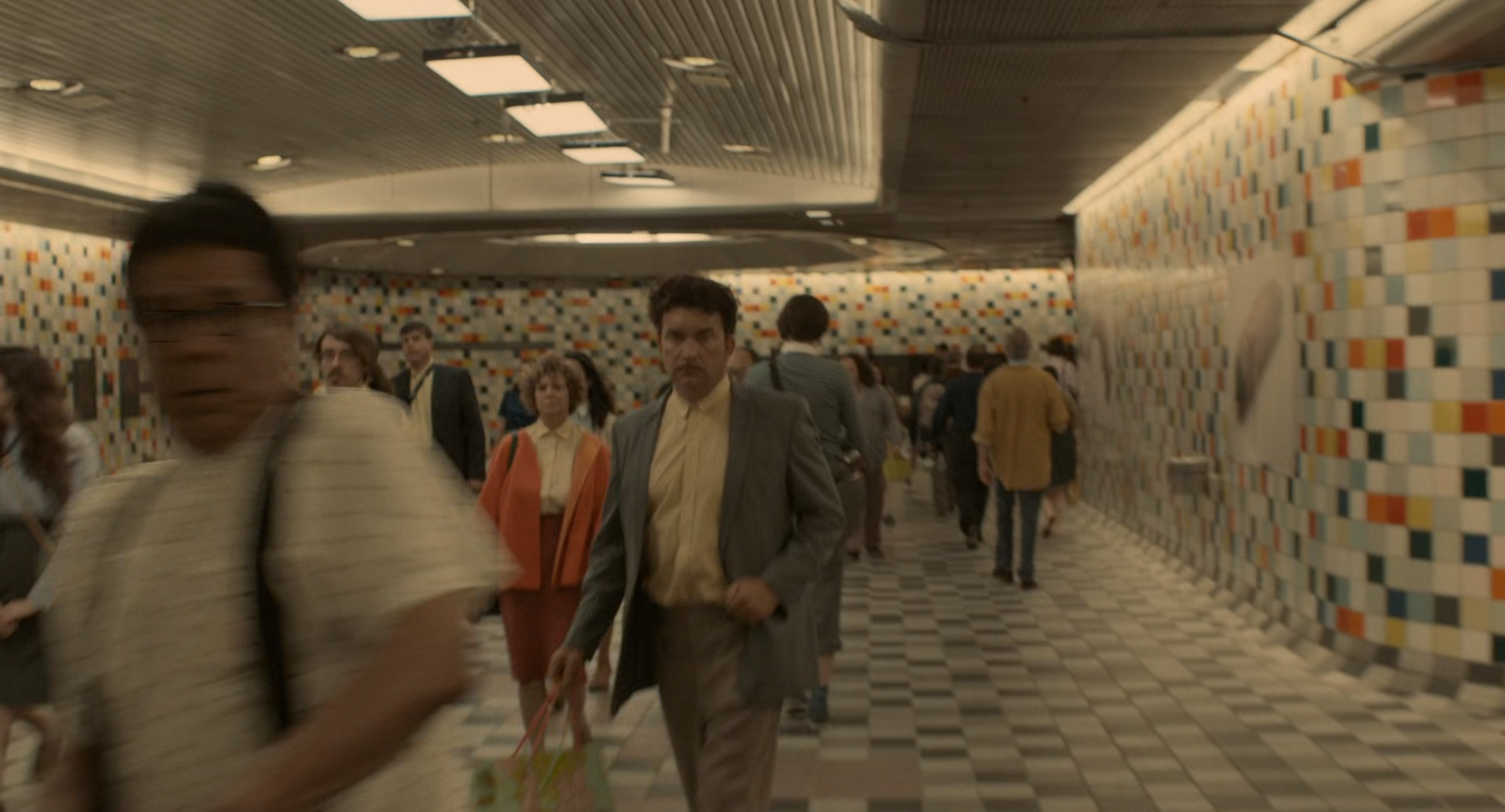

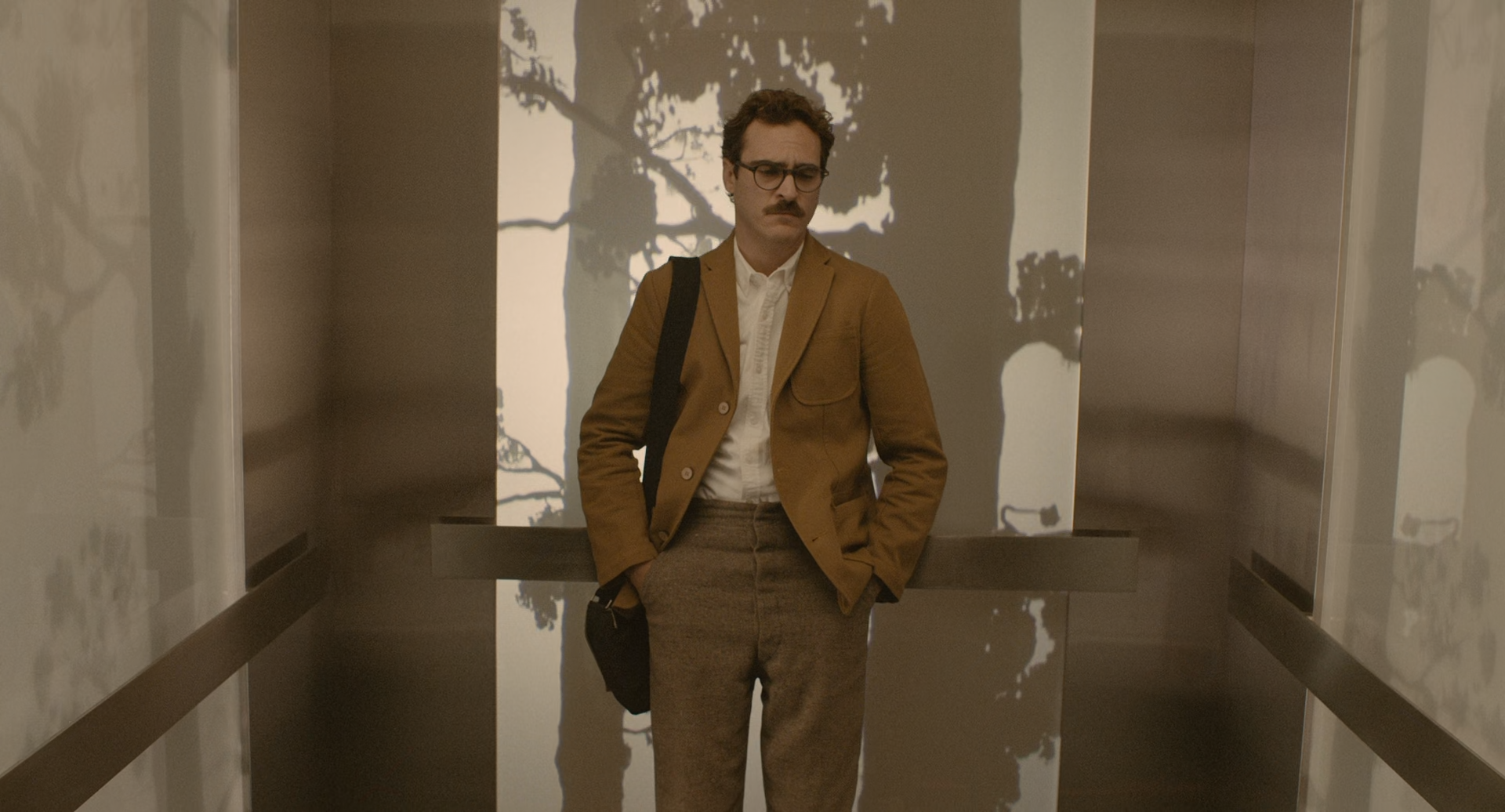
Her‘s vision of the future is brought to life through cohesive, yet surprising production design and costuming details. It’s a world I think a lot of us would want to live in- technologically advanced, comfy, and colorful. And while I can’t help but cringe just a little about it’s status as a certified sad boy classic, it still holds up going on the 10-year mark.
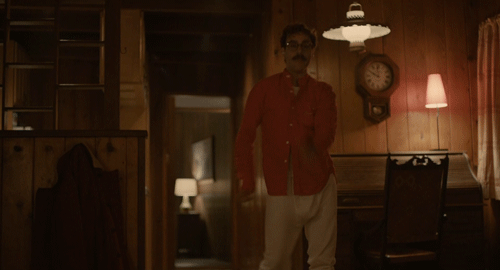
Thank you for reading <3
Edit: 1/10/25
On September 9 of 2024, Chinese phone manufacturer Huawei unveiled a tri-fold phone design that is remarkably similar to Theo’s phone in this film. Just wanted to note that. Link (Mashable).
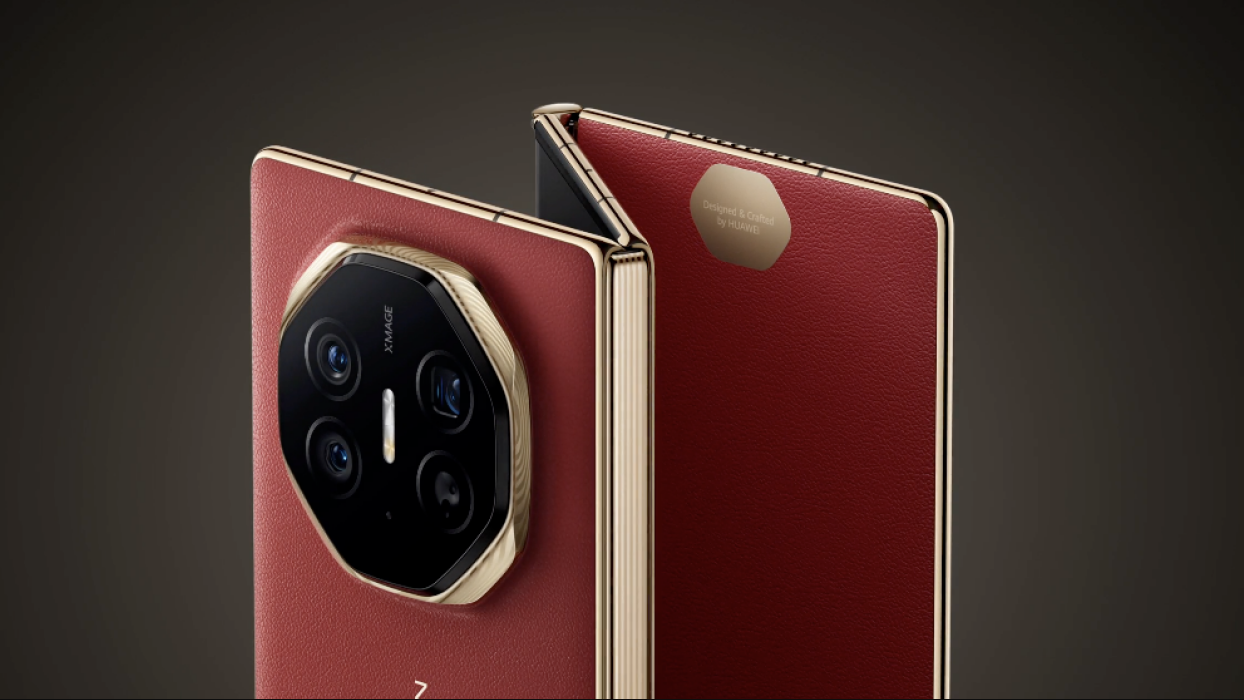
1 Los Angeles Times- “Five days of ‘Her:’ How Spike Jonze created the future”
2 Craft Services podcast- “HER (2013) with Costume Designer Casey Storm”
3 Vulture- “Why Spike Jonze’s New Film Her Might Put Men Back Into High-Waisted Pants”
4 Hypebeast- “Spike Jonze x Opening Ceremony “Her” Capsule Collection”
5 Vulture- “Everything You Wanted to Know About Spike Jonze’s Her”
6 The Cut- “Review: The Radically Unsexy Fashions of Her”
7 Four Three Film- “China, Hollywood and Spike Jonze’s Her”
